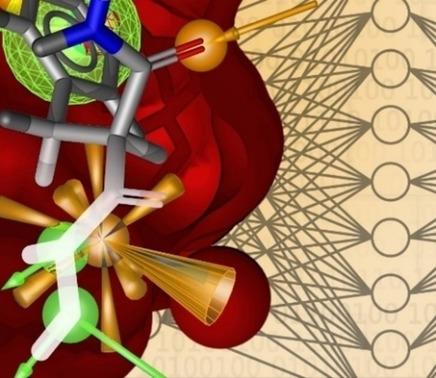当前位置:
X-MOL 学术
›
ChemPhysChem
›
论文详情
Our official English website, www.x-mol.net, welcomes your feedback! (Note: you will need to create a separate account there.)
Chemistry in Times of Artificial Intelligence.
ChemPhysChem ( IF 2.9 ) Pub Date : 2020-08-18 , DOI: 10.1002/cphc.202000518 Johann Gasteiger 1
ChemPhysChem ( IF 2.9 ) Pub Date : 2020-08-18 , DOI: 10.1002/cphc.202000518 Johann Gasteiger 1
Affiliation

|
Chemists have to a large extent gained their knowledge by doing experiments and thus gather data. By putting various data together and then analyzing them, chemists have fostered their understanding of chemistry. Since the 1960s, computer methods have been developed to perform this process from data to information to knowledge. Simultaneously, methods were developed for assisting chemists in solving their fundamental questions such as the prediction of chemical, physical, or biological properties, the design of organic syntheses, and the elucidation of the structure of molecules. This eventually led to a discipline of its own: chemoinformatics. Chemoinformatics has found important applications in the fields of drug discovery, analytical chemistry, organic chemistry, agrichemical research, food science, regulatory science, material science, and process control. From its inception, chemoinformatics has utilized methods from artificial intelligence, an approach that has recently gained more momentum.
中文翻译:

人工智能时代的化学。
化学家在很大程度上是通过实验并收集数据来获得知识的。通过将各种数据放在一起然后进行分析,化学家加深了对化学的理解。自 20 世纪 60 年代以来,计算机方法已被开发来执行从数据到信息到知识的这一过程。同时,还开发了帮助化学家解决基本问题的方法,例如化学、物理或生物特性的预测、有机合成的设计以及分子结构的阐明。这最终导致了自己的学科:化学信息学。化学信息学在药物发现、分析化学、有机化学、农业化学研究、食品科学、监管科学、材料科学和过程控制等领域有着重要的应用。从一开始,化学信息学就利用了人工智能的方法,这种方法最近获得了更大的发展动力。
更新日期:2020-10-19
中文翻译:

人工智能时代的化学。
化学家在很大程度上是通过实验并收集数据来获得知识的。通过将各种数据放在一起然后进行分析,化学家加深了对化学的理解。自 20 世纪 60 年代以来,计算机方法已被开发来执行从数据到信息到知识的这一过程。同时,还开发了帮助化学家解决基本问题的方法,例如化学、物理或生物特性的预测、有机合成的设计以及分子结构的阐明。这最终导致了自己的学科:化学信息学。化学信息学在药物发现、分析化学、有机化学、农业化学研究、食品科学、监管科学、材料科学和过程控制等领域有着重要的应用。从一开始,化学信息学就利用了人工智能的方法,这种方法最近获得了更大的发展动力。

























 京公网安备 11010802027423号
京公网安备 11010802027423号